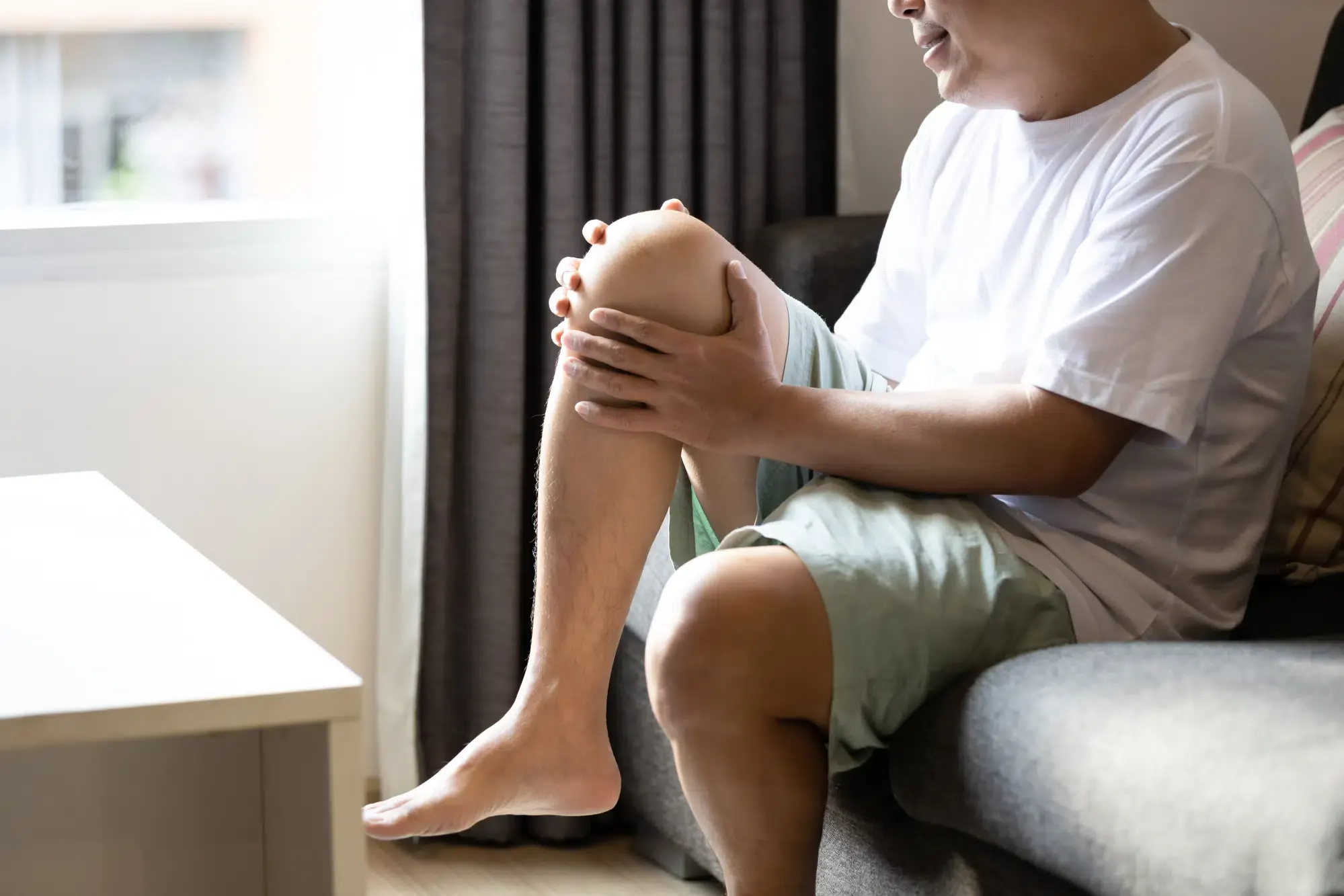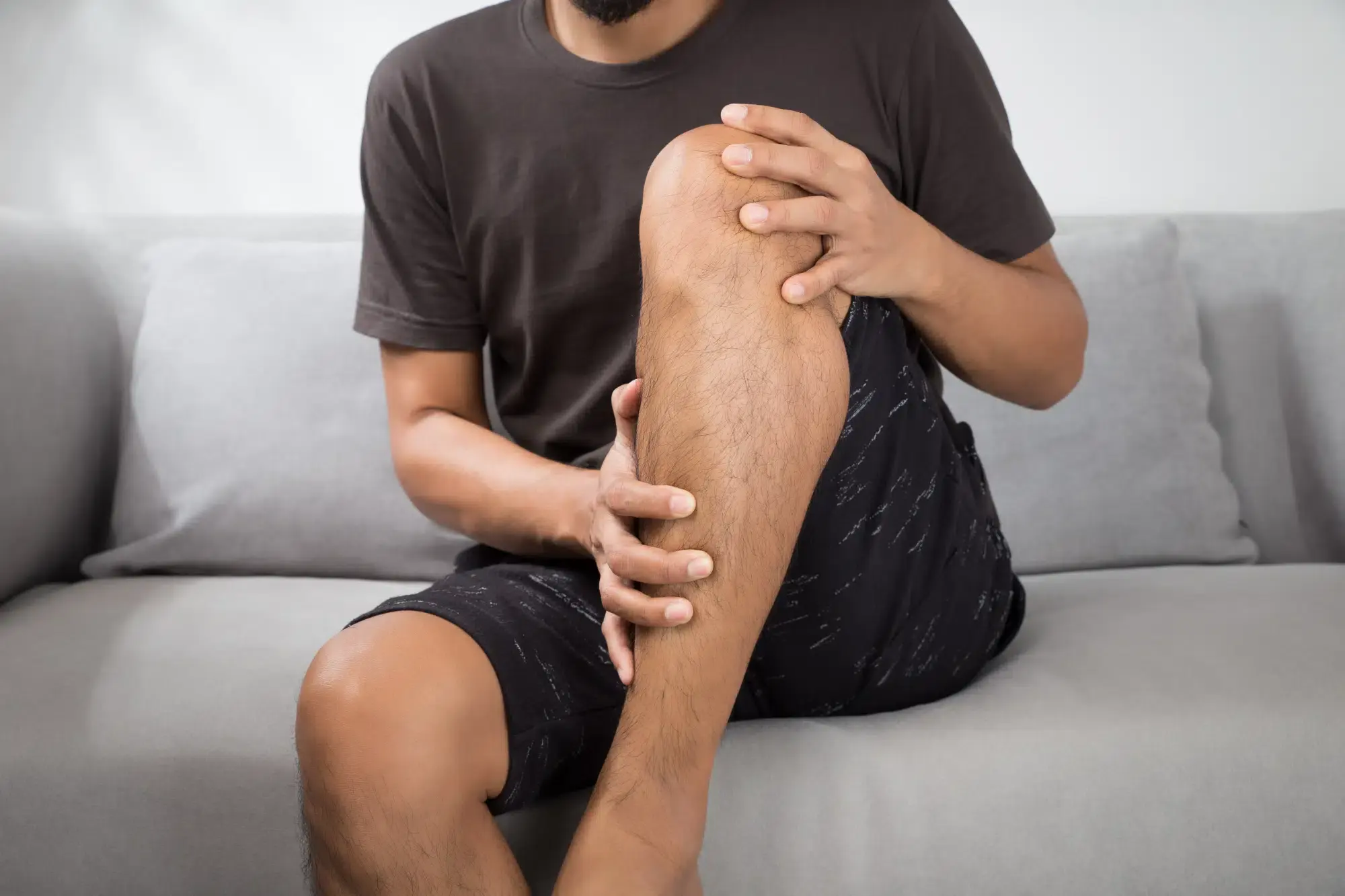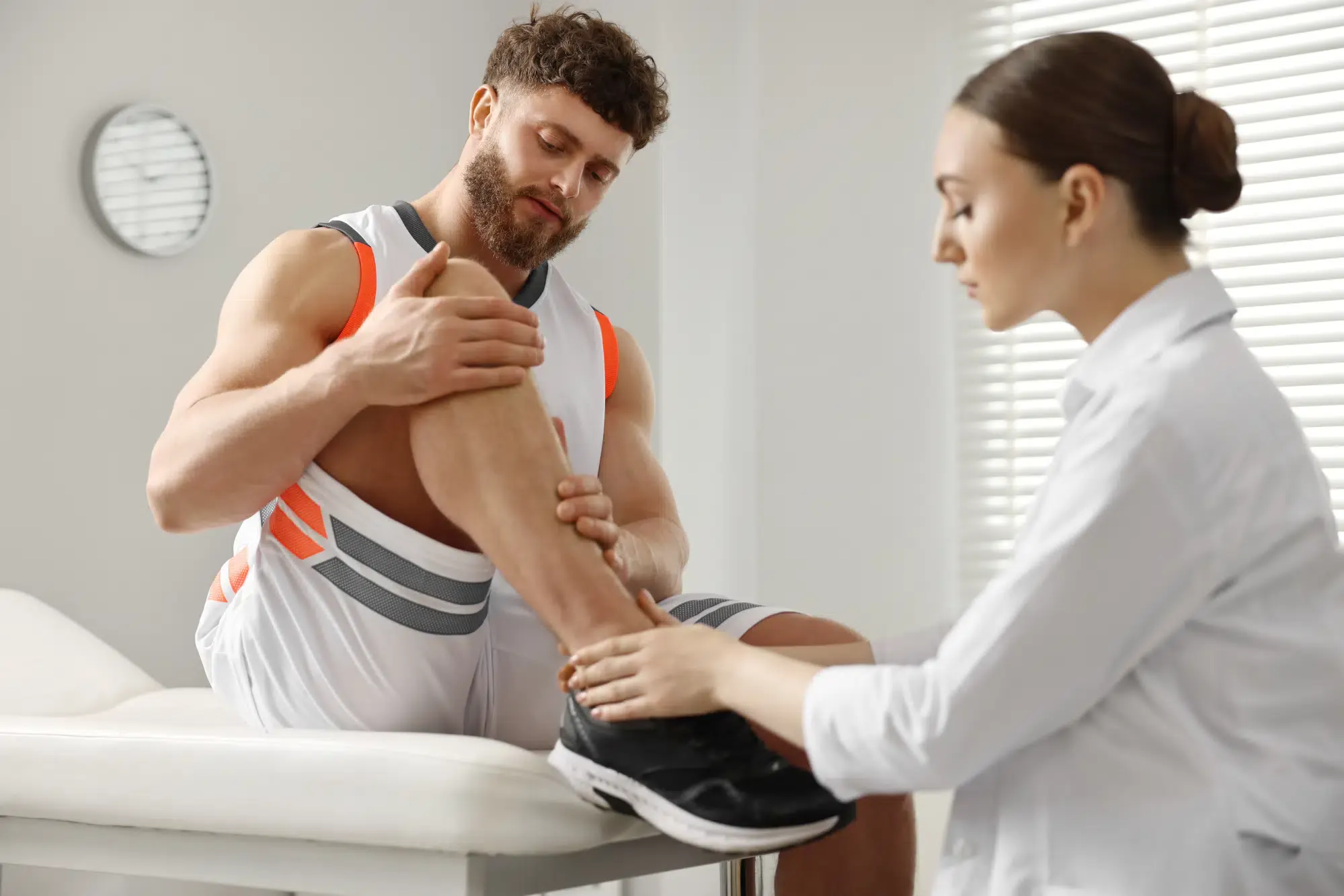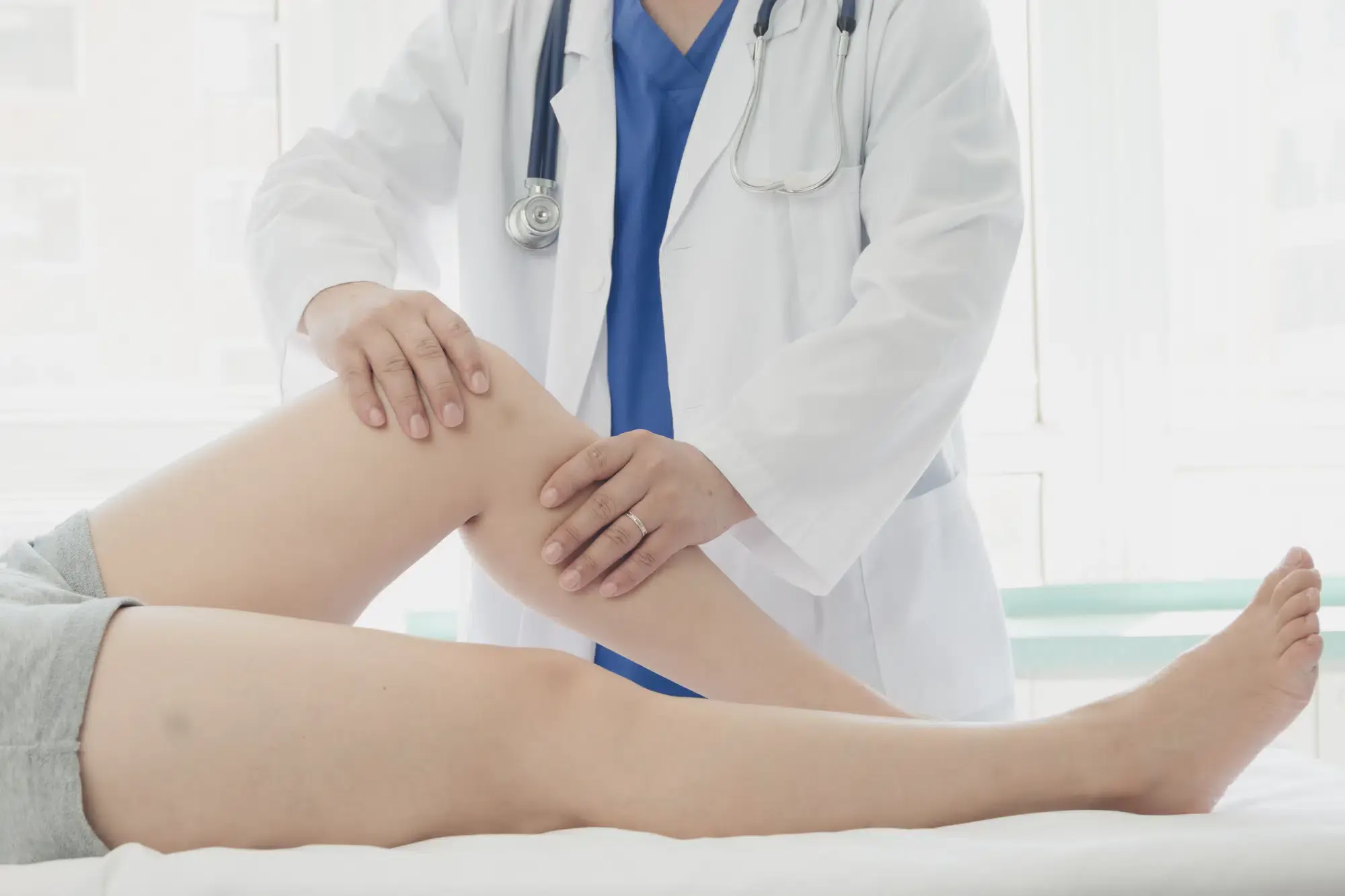Leg Pain in Sparta Township, MI
Finally Stop Your Leg Pain
Get back to work, sleep, and life without constant leg pain holding you back.

Hear from Our Customers

Chiropractic Care Sparta Township
What Life Looks Like Pain-Free
Imagine waking up without that familiar ache shooting down your leg. Picture standing through your entire workday without constantly shifting positions or reaching for pain relievers. Think about walking through Meijer or taking your kids to the Sparta Township park without planning your route around where you can sit down and rest. That’s not wishful thinking—that’s what happens when you address the root cause of your leg pain instead of just masking symptoms. When the pressure comes off compressed nerves and your spine alignment improves, your body can finally heal the way it’s supposed to. You get your energy back because you’re not fighting pain all day. You sleep better because you’re not waking up every time you shift positions. Most importantly, you stop organizing your entire life around what your legs can and can’t handle.
Experienced Chiropractor Sparta Township
25 Years Helping Sparta Families
Since 1998, Chiropractic First has been the go-to choice for Sparta Township residents who want real results, not just temporary relief. While other practices in the area focus on volume and quick turnover, we take time to understand what’s actually causing your leg pain. Every patient gets an individual evaluation because we know that the factory worker dealing with sciatica needs different care than the office manager with nerve compression from prolonged sitting. We use multiple chiropractic techniques—not just one approach for everyone who walks through our door. This is especially important in Sparta Township, where residents deal with everything from physically demanding jobs at local businesses to long commutes into Grand Rapids. Your treatment plan reflects your real life, not some textbook case.

Leg Pain Treatment Process
Straightforward Path to Relief
Your first visit starts with an honest conversation about your leg pain. When did it start? What makes it worse—sitting at your desk, standing on the production floor, or getting out of bed in the morning? We need to understand how this pain fits into your daily routine in Sparta Township. The examination comes next, and it’s thorough. We’ll check your spine alignment, test how your nerves are functioning, and identify any muscle imbalances or joint restrictions. This isn’t a five-minute look—we’re gathering real information to build your treatment plan. Once we know what’s wrong, you’ll get a clear explanation in plain English. No confusing medical jargon, just straight talk about what’s causing your pain and how we plan to fix it. Treatment typically involves targeted spinal adjustments, and when appropriate, massage therapy to support the healing process and address muscle tension that might be contributing to your discomfort.

Ready to get started?
Comprehensive Leg Pain Solutions
Complete Care for Local Residents
Leg pain in Sparta Township residents often stems from the same few causes: compressed nerves from spinal misalignment, muscle imbalances from repetitive work motions, or joint dysfunction that develops over time. Whether you’re dealing with sciatica that shoots down to your foot or a deep ache that gets worse as the day goes on, the solution usually involves getting your spine working properly again. Many patients here work jobs that stress their lower back—manufacturing positions that require lifting and bending, office work with hours of sitting, or service jobs that keep you on your feet all day. Each of these can contribute to the spinal problems that show up as leg pain. Treatment combines precise chiropractic adjustments with massage therapy when muscle tension is part of the problem. We also provide practical advice about workplace ergonomics, stretches you can do at home, and lifestyle modifications that support your recovery. The goal isn’t just to get you out of pain—it’s to keep you that way.

Can a chiropractor actually fix leg pain or just mask it?
A skilled chiropractor addresses the underlying cause of most leg pain, not just the symptoms. The majority of leg pain cases stem from spinal issues—compressed nerves, misaligned vertebrae, or disc problems that put pressure on the nerves controlling your legs. When you get a chiropractic adjustment, you’re correcting the mechanical problem that’s causing the nerve interference. This is different from taking pain medication, which only blocks your brain’s perception of pain without fixing anything. Once the pressure comes off the affected nerves and proper alignment is restored, your body can heal naturally. That said, not every type of leg pain responds to chiropractic care. During your evaluation, we’ll determine whether your specific condition is likely to improve with treatment or if you need referral to another specialist. Honest assessment upfront saves you time and money.
How quickly will I feel better with chiropractic treatment?
Most patients notice some improvement within the first few visits, but complete relief depends on several factors including how long you’ve been dealing with the pain and what’s causing it. Acute leg pain that started recently often responds faster than chronic issues that have been building for months. For example, if your leg pain started after lifting something heavy at work last week, you might feel significantly better after 2-3 adjustments. But if you’ve been dealing with sciatica for six months because of a desk job and poor posture, it will likely take several weeks of consistent treatment to see lasting results. What matters most is steady progress. You should notice improvements in your pain level, mobility, or daily function within the first couple of weeks. If you’re not seeing any positive changes, we’ll reassess your condition and may recommend additional testing or refer you elsewhere.
What's actually causing my leg pain to happen?
The most common cause we see in Sparta Township is nerve compression in the lower back that shows up as leg pain. This happens when spinal vertebrae shift out of proper alignment, disc material bulges, or surrounding muscles become tight enough to put pressure on the nerves that control your legs. Your daily routine often plays a big role. Sitting for long periods—whether at a desk job or during your commute to Grand Rapids—can create muscle imbalances and put stress on your lower back. Physical jobs involving repetitive lifting, bending, or twisting can also gradually shift your spine out of alignment. Sometimes it’s a combination of factors: years of poor posture weakening your core muscles, an old injury that never fully healed properly, or even something as simple as sleeping on a worn-out mattress. The key is identifying which factors are contributing to your specific situation so treatment can address the actual problem, not just the symptoms.
Is chiropractic treatment safe for treating leg pain?
Chiropractic treatment is extremely safe when performed by a licensed professional. Serious complications are incredibly rare—less than one in several million treatments. The most common side effects are mild soreness or stiffness that goes away within a day or two, similar to what you might feel after a good workout. Before starting any treatment, we’ll review your complete medical history and perform a thorough examination to identify any conditions that might require modified techniques. We adjust our approach based on your age, health status, and comfort level. Certain conditions like severe osteoporosis, active infections, or specific types of fractures require special consideration, but these don’t automatically rule out chiropractic care—they just mean using gentler techniques. Your safety is always our first priority, and we’ll explain our reasoning for any treatment recommendations.
Do I need X-rays before starting treatment for leg pain?
X-rays aren’t automatically required for every leg pain case, but they’re valuable diagnostic tools in specific situations. They’re most useful when there’s been a recent injury, if you have a history of fractures, or when your symptoms suggest something more serious than common nerve compression. For many patients with typical sciatica or muscle-related leg pain, a detailed physical examination provides enough information to begin effective treatment. X-rays become more important if your initial treatment isn’t progressing as expected or if your symptoms have certain red flag characteristics. The decision is always made on a case-by-case basis after considering your symptoms, medical history, and examination findings. We’ll explain our reasoning and get your input before ordering any additional testing. The goal is to get you the right diagnosis efficiently without unnecessary procedures or expense.
Will I need ongoing chiropractic care or just a few visits?
The treatment length depends entirely on your specific condition and how your body responds. Some patients with acute leg pain feel dramatically better after just a handful of visits, while others with chronic conditions may need several weeks of consistent care to achieve lasting results. During your first few visits, we’ll give you a realistic timeline based on our examination findings and how you’re responding to treatment. We believe in being straightforward about expectations rather than making promises we can’t keep. Most patients see significant improvement within 4-6 weeks. The goal is always to resolve your pain with the minimum number of visits necessary and give you the tools to prevent recurrence. Once your leg pain is under control, we may suggest occasional maintenance visits, but ongoing treatment isn’t assumed. You’ll always know where you stand and what to expect next.
